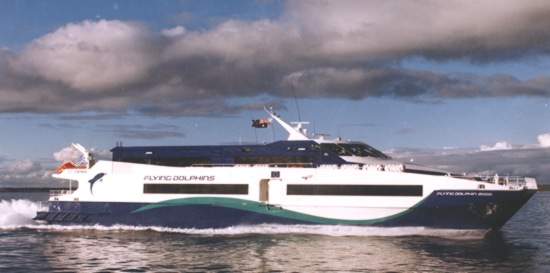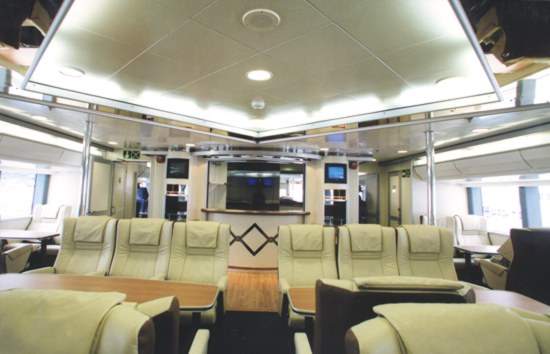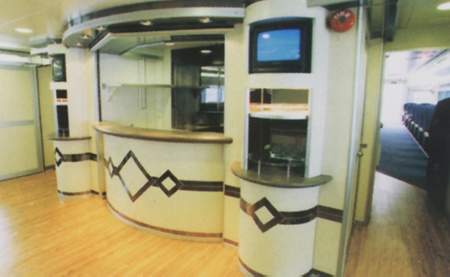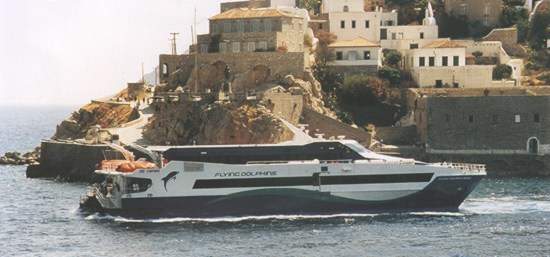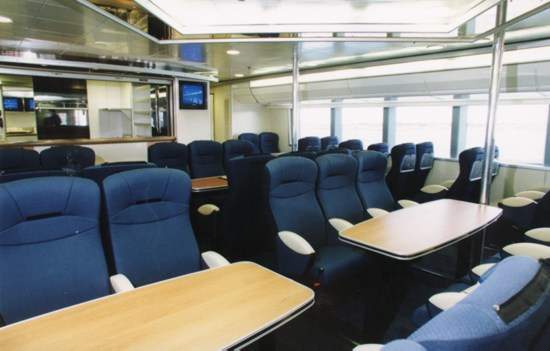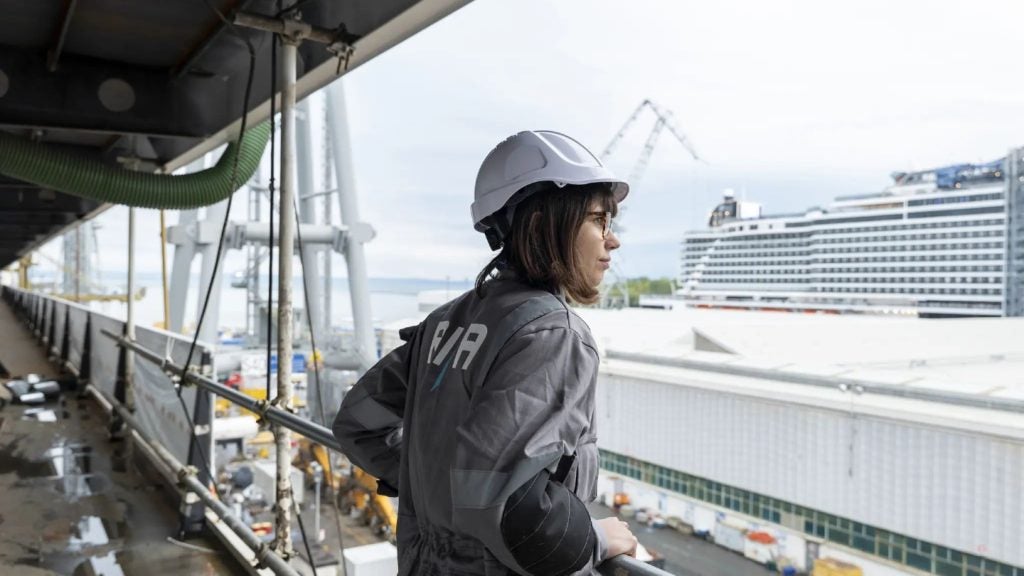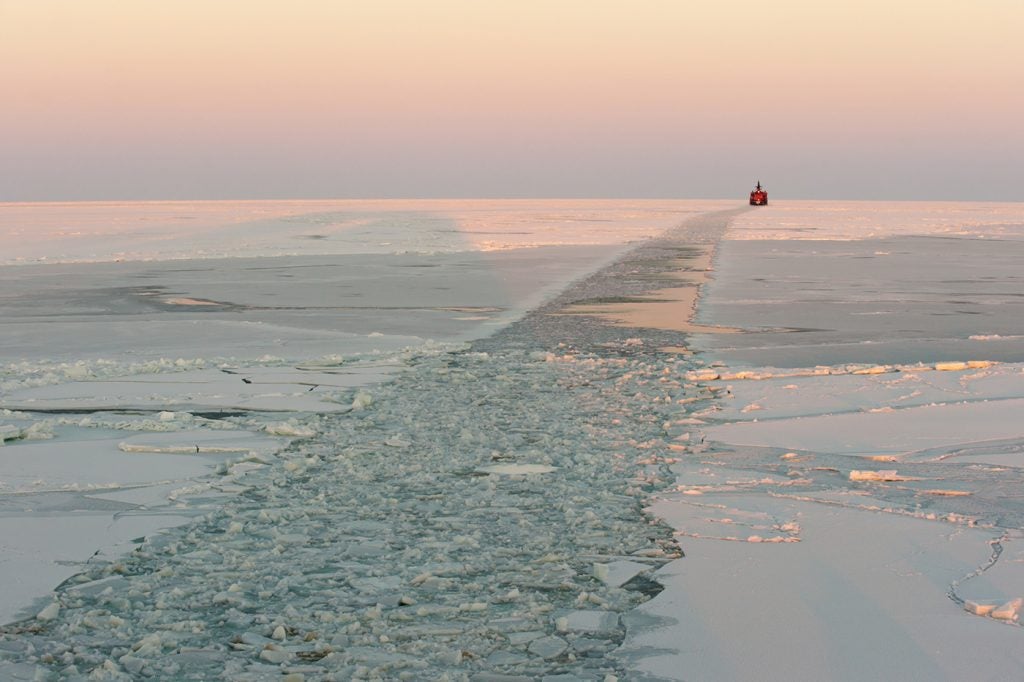Flying Dolphin 2000 was the first high-speed catamaran ferry supplied by Australian aluminium shipbuilder Austal to the Greek market.
The vessel was delivered to Ceres Hydrofoil Joint Service in June 1998 and marked the beginning of Ceres’ programme of fleet renewal, as well as a growing Greek investment in fast marine transport.
The company, widely known as Ceres Flying Dolphins, operates a fleet of 30 high-speed craft, including 18 hydrofoils and a 40m-long catamaran on its Saronic network. Flying Dolphin 2000 connects Piraeus with the Greek islands Poros, Hydra, Spetses and Port-Heli.
Scheduled trip time when calls are made at all three islands en route is 2hr 5min in each direction. The vessel is registered in Greece and has a Germanischer Lloyd classification.
Facilities
Flying Dolphin 2000 is the first of Austal’s medium-size craft to be built with three distinct passenger classes. The all-passenger vessel has a maximum capacity of 516 and was designed to provide a luxurious standard of passenger accommodation and comfort, combined with speed and performance. Because there are no trailers and cars to load, she carries a small crew of nine.
Passengers are accommodated in four air-conditioned saloons, all of which are equipped with reclining seats, set either in forward facing rows or grouped around tables. Overhead lockers are positioned above the aisle seats.
Tourist class seating is located on the main deck and can accommodate 388 passengers in two saloons, one forward and one aft. A kiosk, baggage stowage areas and toilets are positioned amidships, with an additional five toilets and baggage stowage area aft. The crew’s bathroom is also located aft on the main deck.
An aft stairwell leads to Club and VIP, or ‘dolphin’ class accommodation on the upper deck. The forward saloon is equipped for 48 of these passengers who can enjoy complimentary food and drinks during their journey.
A kiosk and toilets separate the dolphin class saloon from the club class saloon aft. This has provision for 80 passengers who also receive complimentary drinks.
The 805gt vessel has an overall length of 47.6m, a moulded beam of 13m and a draught without T-foils of 1.4m
Vessel propulsion
Flying Dolphin 2000 is powered by four MTU 16-valve, four-stroke 4000 M70 engines arranged in a vee-format and positioned two in each hull. Developed jointly by MTU and the Detroit Diesel Company, they each yield 2,320kW at 2,000rpm for a total installation output of 9,280kW.
According to MTU, the engines, which feature an electronically controlled fuel injection system, show an improvement of up to 10% in fuel consumption and exhaust emissions when compared with the company’s 396-series.
Power transmission is through four Reintjes gearboxes to four Swedish-built Kamewa 63 SII waterjets. She has a general service speed of 42k, but can achieve a top speed of 45k in lightship conditions and in good weather.
To ensure passenger comfort, the vessel has been equipped with Austal’s Ocean Leveller ride control system. The fully computerised, hydraulically-actuated system comes into operation in rough sea conditions, employing a T-Foil forward on each hull and interceptors aft on the transoms.
The wheelhouse is equipped with Kelvin Hughes radars, electronic chart navigation, GMDSS A2 communication system and the Ocean Leveller control system.
Flying Dolphin 2000 is fitted with four Viking mini evacuation slides and twelve liferafts that can each hold up to 50 people. The slides, each with landing and enclosed canopied liferafts, are located on the main deck at the midship doors port and starboard, while ramps incorporated in each stern quarter enable direct evacuation into the liferafts.

